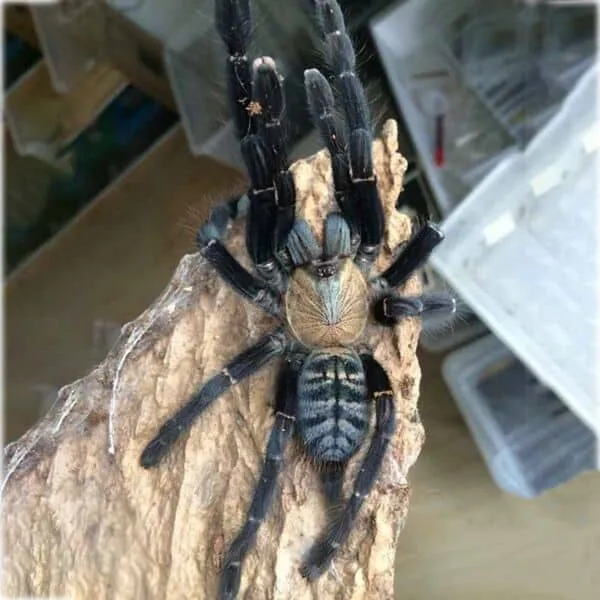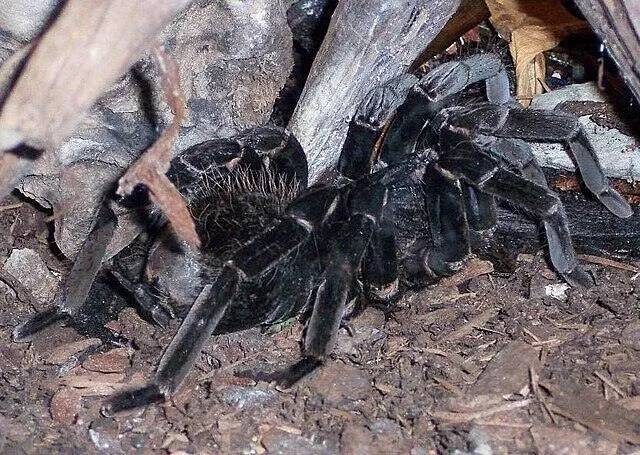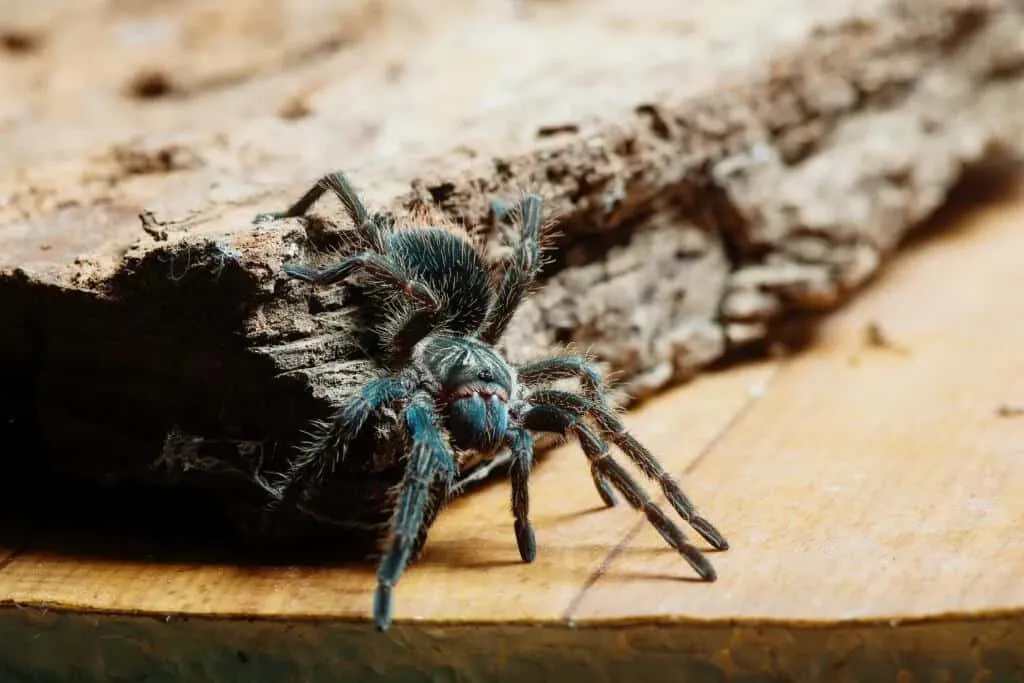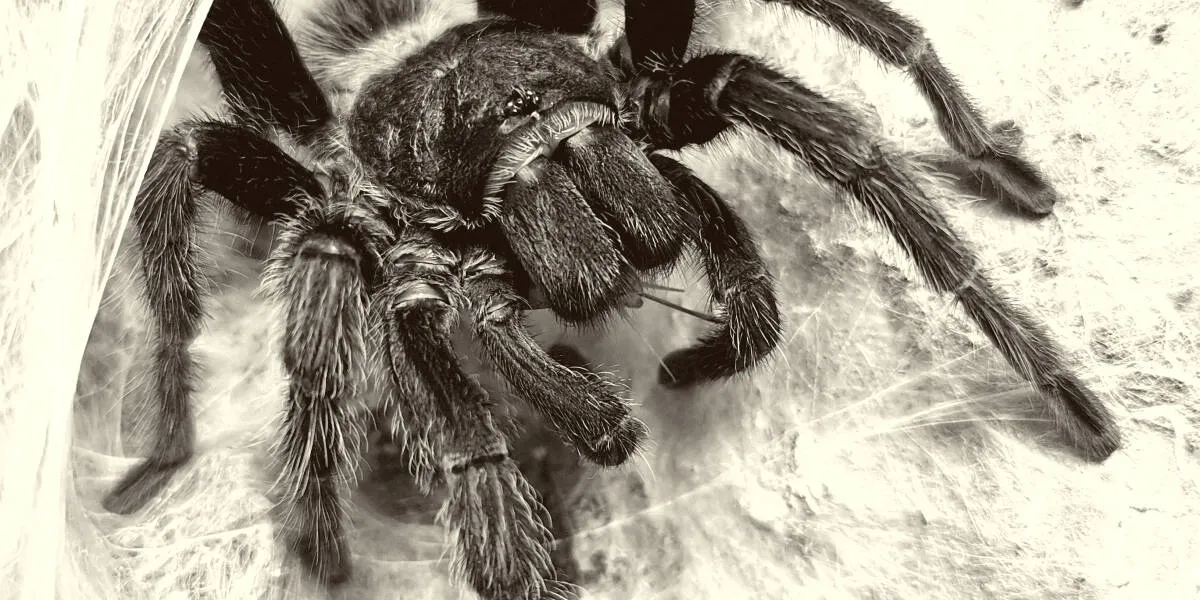Introduction
The world of tarantula keeping is a fascinating realm, filled with diverse species, each with its unique charm. For many enthusiasts, the allure of the hobby extends beyond the common species, and the pursuit of the rarest tarantulas becomes a captivating endeavor. These elusive arachnids are not only visually stunning but also represent a significant challenge and accomplishment for collectors. This guide explores the top 5 rarest tarantulas, delving into what makes them so sought after, how to care for them, and the challenges involved in their acquisition and keeping. Whether you’re a seasoned hobbyist or a curious beginner, this article will provide valuable insights into the world of rare tarantulas, helping you appreciate the dedication and knowledge required to keep these extraordinary creatures.
What Defines a Rarest Tarantula
Defining rarity in the tarantula hobby involves considering several factors. It’s not simply about how few specimens are available, but also the conditions that affect their accessibility. Genetic factors, natural habitat, and the success of captive breeding programs significantly influence a tarantula’s rarity. Some species are naturally limited in their geographic distribution, while others may have specific environmental needs that make them difficult to breed in captivity. Furthermore, the demand from collectors plays a crucial role; a tarantula that is highly sought after but difficult to obtain will be considered rare. This can lead to higher prices and a greater emphasis on ethical sourcing and conservation efforts within the hobby.
Rarity Factors Factors in the Tarantula Hobby

Several factors contribute to a tarantula’s rarity. One significant element is its natural habitat. Species found in remote or specific regions are naturally less accessible. The success of captive breeding programs is another critical factor. Tarantulas that are difficult to breed in captivity remain rare because the primary source of new specimens is still wild-caught, which presents conservation challenges. Demand also shapes rarity; highly desirable species will naturally be rarer due to their popularity. Additionally, the legal status of a species can impact its availability. Some species are protected by conservation laws, restricting their trade and making them rarer in the hobby. Finally, the lifespan and growth rate of a tarantula influence how often they appear in the hobby. Slower-growing species take longer to reach maturity and reproduce, which makes them rarer than faster-growing species. These combined elements contribute to a complex ecosystem of supply and demand in the tarantula hobby.
The 5 Rarest Tarantulas
The following list highlights five of the rarest and most sought-after tarantulas in the hobby. These species are admired for their unique appearance, rarity, and the challenges they present to keepers. Note that prices and availability can fluctuate, and ethical sourcing from reputable breeders is crucial when acquiring these animals. These tarantulas represent the pinnacle of collecting, showcasing the dedication and expertise of those involved in their care. The thrill of acquiring and successfully keeping one of these species is a rewarding experience for any dedicated tarantula enthusiast.
Poecilotheria Metallica
The Poecilotheria metallica, also known as the Gooty Sapphire Ornamental, is a stunning tarantula from India. Its vibrant blue and metallic coloration make it a highly desirable species. The rarity of this tarantula stems from its limited distribution in the wild and the challenges associated with captive breeding. This arboreal species requires specific humidity and temperature conditions, which can make it difficult for keepers to replicate in a controlled environment. The Poecilotheria metallica is also known for its potent venom, making it a species best suited for experienced keepers. Its rarity and striking appearance make it one of the most prized specimens in the hobby.
Theraphosa apophysis

Theraphosa apophysis, or the Goliath Pinkfoot, is a large and impressive tarantula, native to the rainforests of South America. Although related to the Goliath Birdeater (Theraphosa blondi), the Pinkfoot is rarer in the hobby. Its scarcity is due to its specific habitat requirements and the limited number of successful captive breeding programs. The Pinkfoot’s size and powerful nature mean that it demands considerable space and requires experienced handling. Its unique pink coloration adds to its allure, making it a prized possession for collectors. Its demand exceeds supply, which keeps the Pinkfoot one of the most sought after tarantulas in the hobby.
Psalmopoeus irminia
Psalmopoeus irminia, also known as the Venezuelan Sun Tiger, is a colorful arboreal tarantula. It is relatively rare due to its specific care requirements. This species thrives in high humidity and warm temperatures, replicating its natural tropical environment. While they are not as difficult to breed as some other rare species, their specific needs can challenge novice keepers. The Sun Tiger’s striking coloration and active nature make it a favorite among tarantula enthusiasts. Their relatively smaller size compared to other rare species makes them slightly easier to manage, increasing their appeal within the hobby. Successful captive breeding programs are helping to increase their availability, but they remain highly sought after.
Harpactira pulchra
The Harpactira pulchra, or the Golden Blue Leg Baboon, is a terrestrial tarantula native to Tanzania. The rarity of this species is influenced by its limited availability in the wild, and specific care requirements. They are known for their beautiful coloration and relatively docile temperament. This tarantula prefers dry conditions and requires a well-ventilated enclosure. They are popular with collectors for their striking appearance. Their needs can be met with careful attention to environmental conditions, which also adds to their value within the hobby, and these factors contribute to its status as a rare find.
Stromatopelma calceatum

Stromatopelma calceatum, or the Feathertail Baboon, is an arboreal tarantula from West Africa. It is valued for its unique appearance and relatively challenging care requirements, increasing its rarity. They are known for their fast growth rate and are very active spiders, making them a fascinating species to observe. Providing them with the correct environment is key to their success. Their needs are met with a taller enclosure and high humidity levels, a combination that ensures their well-being. Because they are highly sought after, their scarcity is a point of interest to advanced hobbyists who enjoy the challenge.
Caring for Rare Tarantulas
Caring for rare tarantulas demands a significant commitment and in-depth knowledge. These species often have very specific environmental requirements, including precise temperature, humidity, and ventilation needs. Understanding their natural habitat and replicating it in captivity is essential for their health and longevity. It is crucial to have the correct equipment, such as accurate thermometers, hygrometers, and appropriate enclosure setups. Furthermore, rare tarantulas are often more sensitive to handling and environmental changes than common species, so careful observation and monitoring are crucial. Proper feeding, including a varied diet of appropriately sized insects, is also critical to their well-being. Any potential keeper should carefully research their chosen species before acquisition.
Habitat and Enclosure
The habitat and enclosure for rare tarantulas should closely mimic their natural environment. Arboreal species need tall enclosures with ample vertical space, while terrestrial species require more floor space. Substrate choice is essential, often involving a mix of substrates to maintain humidity and allow for burrowing. Ventilation is important, but should not be so excessive that it dries out the enclosure. Decorations, such as cork bark, branches, and artificial plants, provide hiding places and enrichment. Temperature and humidity levels must be meticulously controlled. Use of a reliable thermometer and hygrometer is essential. Regular misting or a water dish provides hydration. Creating a stable and appropriate environment is essential for the health and well-being of rare tarantulas. Careful attention to detail in the enclosure design is a key factor in the success of keeping these species.
Feeding and Hydration

Proper feeding and hydration are essential aspects of caring for rare tarantulas. A varied diet is essential for their health, typically consisting of insects such as crickets, roaches, and mealworms. The size of the prey should be appropriate for the size of the tarantula; ideally, the prey should be no larger than the tarantula’s abdomen. Overfeeding can lead to health problems, so feeding frequency should be adjusted based on the species and the spider’s growth stage. Access to fresh water is crucial. This can be provided through a shallow water dish or, for some species, by misting the enclosure. Water should be changed regularly to prevent contamination and ensure a clean water source. Providing a balanced and nutritious diet is essential for the overall health, growth, and longevity of rare tarantulas, making these tasks vital for responsible tarantula care.
Common Challenges with Rarest Tarantulas
Keeping rare tarantulas comes with its own set of challenges. One of the most significant is the need for extensive research and preparation. Because these species are not as well-documented as common tarantulas, finding reliable information about their care can be more difficult. Captive breeding is another challenge, and is not always successful, contributing to their rarity. Sourcing ethical specimens from reputable breeders is crucial to avoid illegally obtained animals and ensure the health of the tarantula. Handling is also a considerable challenge; many rare tarantulas have potent venom, and their temperament can be unpredictable, requiring experienced keepers. Lastly, maintaining consistent environmental conditions, especially humidity and temperature, is essential. Any deviation from these conditions can cause stress or illness to these sensitive creatures, which increases the importance of diligence and expertise in caring for them.
Conclusion
The allure of rare tarantulas in the hobby lies in their unique beauty, the challenge they present, and the satisfaction of successfully keeping these extraordinary creatures. While the pursuit of these species requires considerable dedication, knowledge, and ethical practices, it is a rewarding experience for the passionate hobbyist. By understanding the factors that define rarity, the specific care requirements of these fascinating arachnids, and the challenges involved, keepers can contribute to the conservation and appreciation of these incredible creatures. As the tarantula hobby evolves, the demand for rare species will continue, underscoring the importance of responsible and informed keeping practices. So, if you are considering entering the world of rare tarantulas, be prepared to invest time and effort into becoming a knowledgeable and dedicated keeper.
